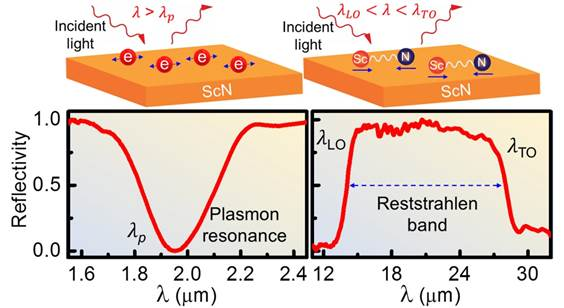Important Facts For Prelims
Single-Crystalline Scandium Nitride
- 06 Jul 2022
- 2 min read
Why in News?
Researchers at Bengaluru's Jawaharlal Nehru Centre for Advanced Scientific Research (JNCASR) have discovered a new material called "single-crystalline scandium nitride (ScN)" that can convert infrared light into renewable energy.
- To accomplish this feat, scientists used a scientific phenomenon known as polariton excitations, which occur in tailored materials when light couples with either collective free electron oscillations or polar lattice vibrations.
- Infrared light is beyond the light range that is visible to the human eye, and falls between the visible light and microwave regions (the wavelength is longer than visible light).
- Infrared sources, emitters, and sensors are in high demand across a wide range of industries, including electronics, healthcare, defense and security, and energy, further infrared polaritons in scandium nitride will enable its use in a variety of such devices.
What are the Key Highlights of Single-Crystalline Scandium Nitride (ScN)?
- About:
- It has high efficiency in emitting, detecting, and modulating infrared light, making it useful for solar and thermal energy harvesting, as well as optical communication devices.
- Scientists have carefully controlled material properties to excite polaritons (a quasi-particle) and achieve strong light-matter interactions in single-crystalline scandium nitride (ScN) using infrared light.
- Significance:
- As these polaritons in ScN are also compatible with modern complementary-metal-oxide-semiconductor (CMOS) or Si-chip technology and, as such, could be easily integrated into on-chip optical communication devices.
- These exotic polaritons in the ScN can be utilized for solar and thermal energy harvesting.





